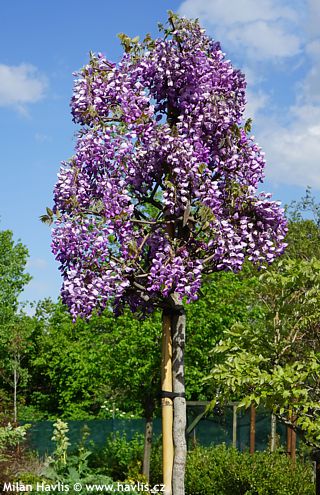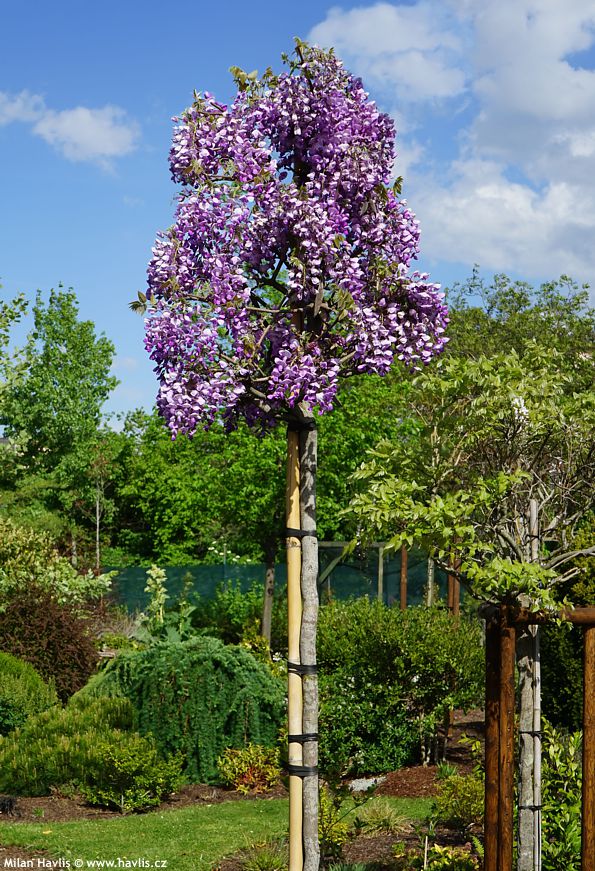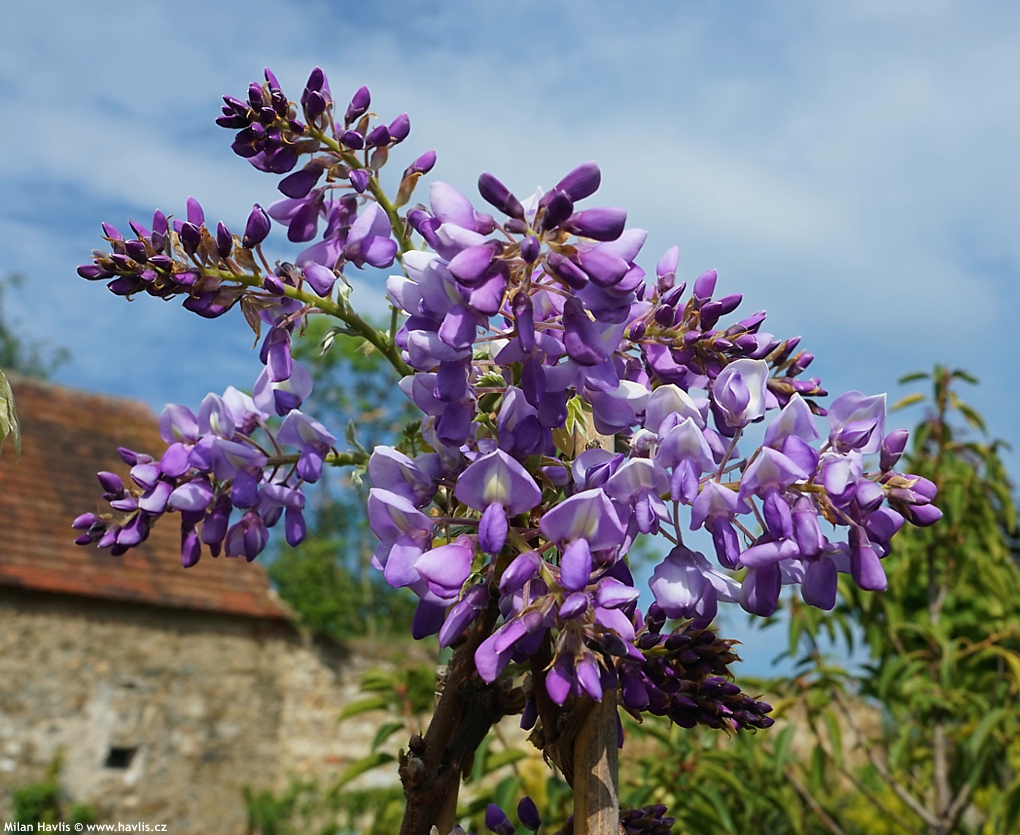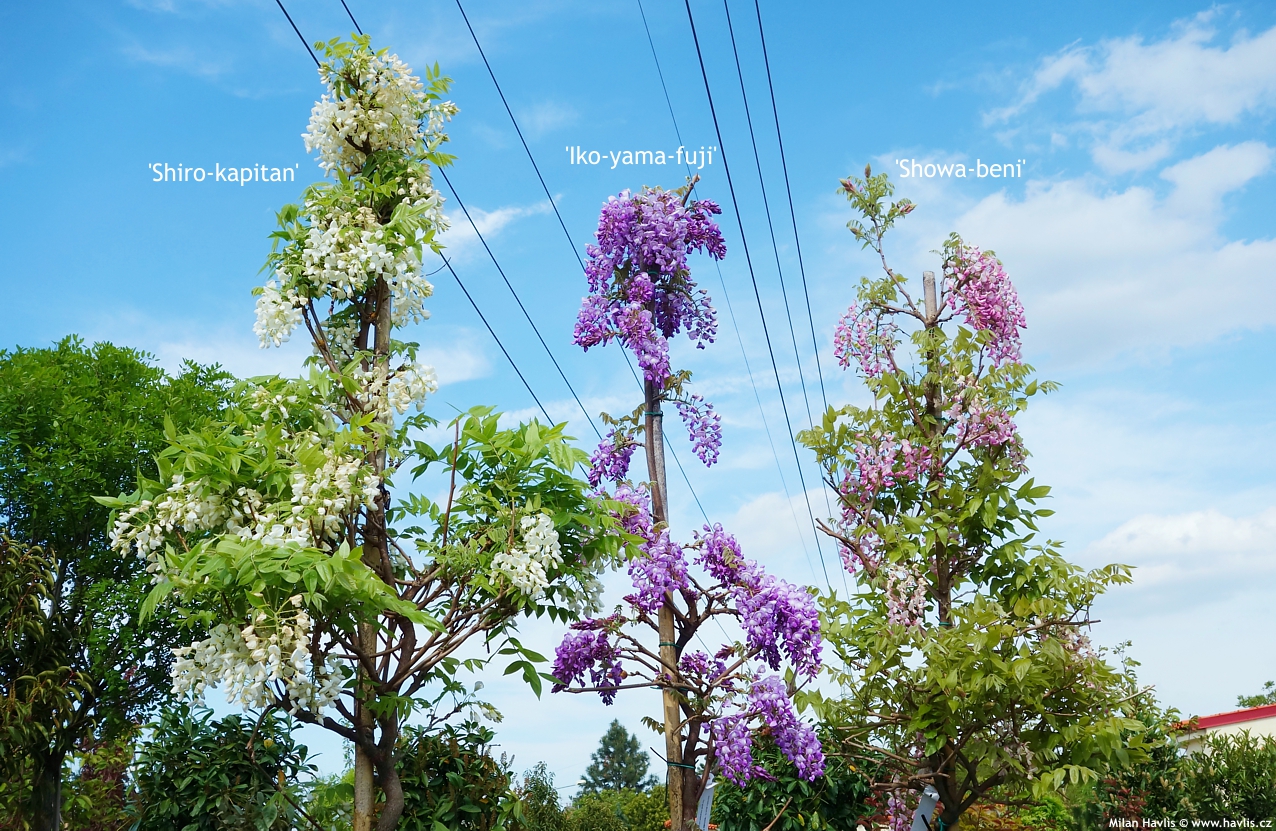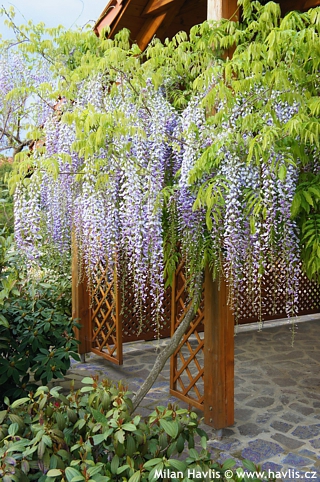Wisteria brachybotrys 'IKO YAMA FUJI' silky wisteria - STANDARD TREE


Wisteria
Silky wisteria is one gorgeous flowering plant. What makes it different compared to other species are its silky leaves and stumpy racemes of flowers composed in shorter racemes. Flower colours are usually deeper than those on either Japanese or Chinese wisterias.
Iko Yama Fuji (or Iko-yama-fuji) is a silky wisteria with rich violet blue flowers with a conspicuous yellow spot on a paler upper lip. Individual flowers are pea-like, about twice the size of other wisterias, and have a lovely perfume. They open in late spring and easily avoid late spring frosts. They are followed by long bean-like seed pods which are poisonous.
Pinnate leaves are fresh to mid green and look rather exotic. They are downy and soft, hence name silky wisteria. The foliage densely covers the plant and its support, which is necessary also for tree-like forms because the wood of this climber remains very flexible for many years. Once the base trunk has hardened up you can remove the support.
Wisteria grown as a standard tree needs a strong support for many years before its trunk hardens enough to hold the crown (about 5-6 years from transplanting). Wisterias flower mainly on short spurs along the twigs and pruning will encourage setting of flower buds so cut back long branches to 5-10 cm every spring and also during the season.
It likes acidic, reasonably fertile soil that is moist but well-drained. No fertilizing recommended. Abundant flowering can be achieved by regular pruning – cut back longest shoots several times a year. It needs full sun. Young plants with soft wood can be damaged by harsh winters. Fully hardy to about -29°C (USDA zone 5).
Last update 15-01-2021

































